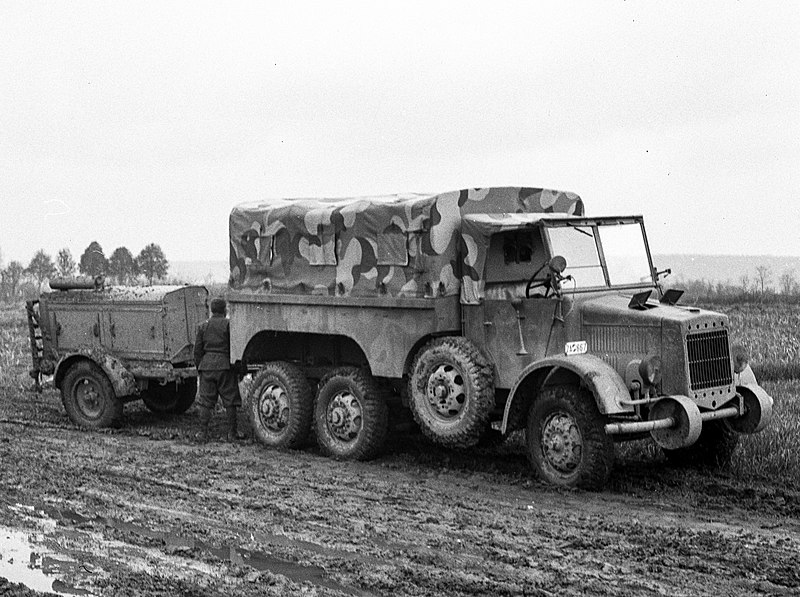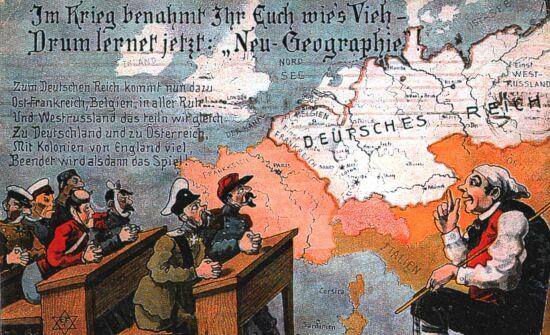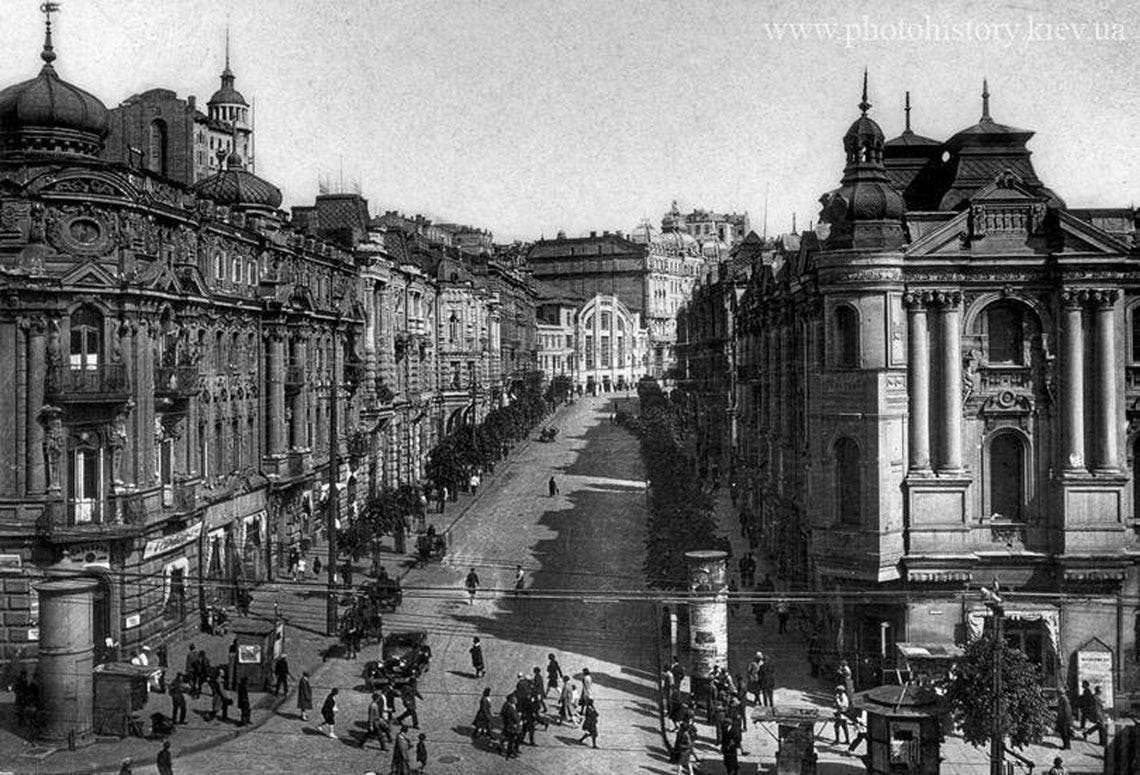You are using an out of date browser. It may not display this or other websites correctly.
You should upgrade or use an alternative browser.
You should upgrade or use an alternative browser.
Photos of the Kaiserreich
- Thread starter pattontank12
- Start date

Canadian soldiers with a captured Mittelafrika SdKfz 222, being inspectioned before transporting it to their base
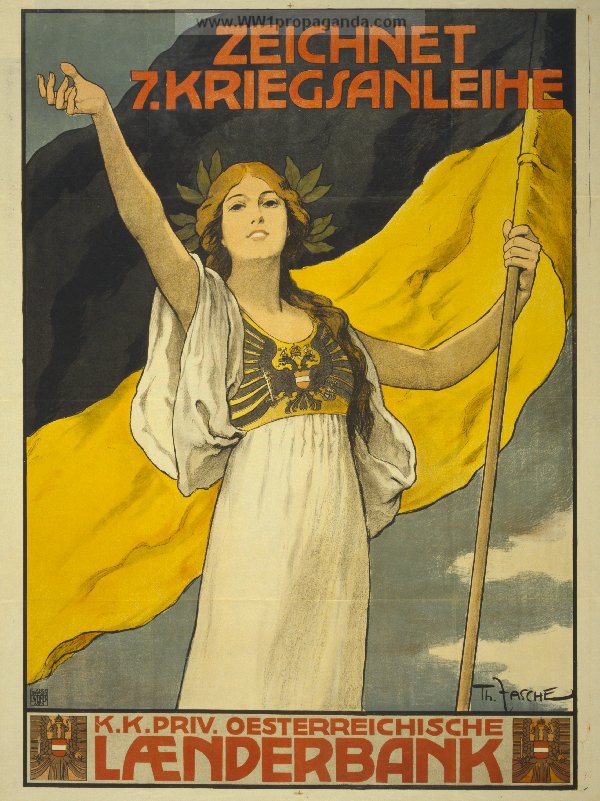
Austria-Hungary propaganda poster announcing the seventh war bound drive to give more support, despite the crumbling of the empire and the reforms made later.

Jawaharlal Nehru, visiting Pondicherry a few months after the de facto transfer of the german territory to the Republic of India, who reunified the region after a pact with the british and the less-radical members of the Bharatiya Commune
From Timeline-166 (My personal Kaiserreich timeline)
The War in the East: A Complete History of the Eastern Front of the Second Weltkrieg
~ By Joanne Meyer
 Chapter 23: The Turning Tide
Chapter 23: The Turning Tide
On June 22, 1941, at approximately 03:00 UTC, the Great White Army (forces of Savinkovist Russia) began to storm across the borders of the United Baltic Duchy, Ukraine, White Ruthenia, Georgia, and Azerbaijan. Codenamed: Operation Kutuzov, it would become the largest invasion in human history. Involving some 5.2 million troops, 32000 artillery pieces, 5000 tanks, 15000 trucks, 1900 fighter planes, 900 attack planes, and 500 strategic bombers. The main objectives (from the Russian viewpoint) were to “recapture” the Russian territories of the “German-Occupied Western territories” and break the back of an already weakened Reichs Heer. The operation was truly the beginning of the end of the German Kaiserreich, even if the German high command refused to recognize it as such.

~ Forces of the 11th Guards Tank Army triumphantly enter Kharkov on June, 29th 1941. The total route of Reichspakt forces near the city greatly bolstered morale in the Russian National Republic and reinforced the image of Savinkov’s Russia as a “liberating” hero for the Slavic peoples of Europe.
The War in the East: A Complete History of the Eastern Front of the Second Weltkrieg
~ By Joanne Meyer
On June 22, 1941, at approximately 03:00 UTC, the Great White Army (forces of Savinkovist Russia) began to storm across the borders of the United Baltic Duchy, Ukraine, White Ruthenia, Georgia, and Azerbaijan. Codenamed: Operation Kutuzov, it would become the largest invasion in human history. Involving some 5.2 million troops, 32000 artillery pieces, 5000 tanks, 15000 trucks, 1900 fighter planes, 900 attack planes, and 500 strategic bombers. The main objectives (from the Russian viewpoint) were to “recapture” the Russian territories of the “German-Occupied Western territories” and break the back of an already weakened Reichs Heer. The operation was truly the beginning of the end of the German Kaiserreich, even if the German high command refused to recognize it as such.
~ Forces of the 11th Guards Tank Army triumphantly enter Kharkov on June, 29th 1941. The total route of Reichspakt forces near the city greatly bolstered morale in the Russian National Republic and reinforced the image of Savinkov’s Russia as a “liberating” hero for the Slavic peoples of Europe.
Objects of Importance
The Russian Tank program in the 21st Century
Despite being the largest military on Earth, the Russian army was generally not well equipped by the Early 2000's. An economic recession in 1998 had nearly halted heavy manufacturing and electronic parts production, and most of those resources were diverted to transport and aircraft, while Trains, Trucks, and Tanks were all slowed to a crawl. Despite this setback, money was still funneled into the tank development program and it's experimental designs to replace the aging T-72 and the almost obsolete T-80 hull. In June of 2000, there was a competition between several vehicle designers to build a tank of the future. Two designs were immediately accepted for further trial, one by Uralvagonzavod and one by Omsk Transmash, both given a huge task. Replace the T-72 and T-80, which had combined for about 8,700 units in service.The Russian Tank program in the 21st Century
A photo of the Object 640 in testing, which would eventually become the T-10 Main Battle Tank.
Object-195 during its drive test. The Object-195 was later accepted and designated the T-16
Uralvagonzavod's design, unlike Omsk Transmash, was entirely new from the hull, which was redesigned from the T-90 and T-72 programs, heightened, lengthened, and a new composite armor material used for its armor. Crew were now placed entirely in the hull, within a heavily armored pod with advanced sensor suites and an inventive ground-based RADAR for rangefinding and scouting placed on the turret. This tank was nearly 60 Tons, much heavier than the Object 640, and less mobile, but with a larger sensor suite and more firepower. The main weapon was the 152mm 2A83M cannon, which fired enormous shells at over two kilometers per second. This design was not accepted until 2014, when the need to upgrade from an entirely 125mm based tank fleet was seen. This tank was therefore designated the T-16. After a redesign in 2016, replacing the Relikt ERA with more advanced Malachit ERA and implementing a new, more powerful 1,650hp engine, this tank was ordered for 350 units by 2020. There are 430 units in service and 800 ordered, but production has slowed while more resources are diverted to bringing the T-90 and T-80BVM up to date, and retiring the few remaining T-72s left in service.
Last edited:
posters for "National Defense Girls I will protect Japan!,Kokubō joshi Nipponkoku wa watashi ga mamori ma ̄ su!,国防女子 日本国は私が護りまーす! " on Bilibili "Japanese people's army, 日本人民軍,Rìběn rénmín jūn" a sino-Japanese anime about an alternate world dominated by the entente and the Reichspakt . The timeline is often called the imperialists world(帝国主义世界,帝国主義者の世界) among fans The world shows Asia dominated by imperial powers with Thailand and India being a part of a new British Raj and a protectorate under German East Asia and a AOG dominated China with the Qing emperor being the normal head of the country under German rule it also shows a Japan petitioned among imperial powers with a German controlled County of Chūgoku,Duchy of Shikoku, principality of Kansai, free city of Kyoto, Grand Duchy of Chūbu, principality of Kanto free city of Tokyo under under notional kingdom of Japan As well as the German dominated duchy of Hokkaido and protectorate of Tōhoku . with the British directly annexing Kyūshū and Okinawa as provinces of the Crown colony of Japan The primary cast is a group of anti-colonial resistance fighters
The cast
Nagisa Agawa (CN VA :hanser) member of the Chūkaku-ha (中核派 "Central Core Faction") of the Japanese democratic army (日本民主軍 Nihon minshu-gun)
Nanami Aniya member of the Kakumaru-ha (Japanese: 革マル派.革马派) or revolutionary Marxist faction of the Japanese People's Army (Nihon jinmin-gun,日本人民軍)
kai Henmi member of the Japan restoration Front (日本復興戦線 Nihon fukkō sensen)
Hajime Amemiya member of the liberation faction (解放派 Kaihо̄-ha) of Japanese Red Army (日本赤軍, Nihon Sekigun, abbr. JRA)
fang ling Chinese member of the Chūkaku-ha
mei Himeko member of the Japan Liberation Front, also referred to as the JLF (日本解放戦線, Nihon Kaihō Sensen)
Trần Chi representative of the pan Asian liberation front (泛亚解放阵线,パンアジア解放戦線 ,Pan Ajia kaihō sensen)
Yae Tokuda member of the Kōdō-ha (行動派"action faction") of Japanese liberation Army (Nihon kaihō gun,日本解放軍)
Last edited:
From Timeline-166
No Calm on the Western Front
~ Michel Foucault (1971)

Almost immediately upon the declaration of war against the German Empire, issued on August 11, 1939, the Communal Army was on the move. The main bulk of the German Imperial Army, having taken the bait of an elaborate ruse de guerre, marched into the client state of Flanders-Wallonia, expecting the main French thrust to come from the Ardennes. This French “offensive thrust” was actually a skeleton invasion composed primarily of British commandos and a small specialized French force. Instead, Communard forces, in an unexpectedly obvious move, assaulted the “West Wall” of the Kaiserreich directly. While the “West Wall” of Germany was technically impressive, the mass movement of German troops out of it towards Flanders-Wallonia left it incredibly vulnerable. A massive artillery bombardment, followed by bombings from the RAF and Communal Airforces shocked and devastated the German defensive line which had stretched from Mulhouse to Nanzig to Metz. This combination of trickery and bombardment truly paved the way for the famous Guerre Éclair, as French Armored forces carved through the undermanned German border garrisons and began the 2 week push to the Rhine.

~ Communard Forces take position along the Rhine, in the city of Bonn, to hold off any German counter-attacks..
Within two weeks, Communard forces had captured the strategic city of Bonn, marking the first time since the Napoleonic Wars that French forces had successfully invaded German territory, and effectively cut off supply shipments to the German forces now trapped in Flanders-Wallonia. Communard forces quickly dug in and prepared to repel any German attempts to recover the city and relieve their trapped compatriots in the lowlands.

~ The Devastation of Bonn (photographer unknown)
As the situation worsened in the west, the High Command of the Reichs Heer scrambled to repel French attempts to cross the Rhine (with success) and made its own attempts recover territory west of the Rhine. The 2nd battle of Bonn left the German city utterly devastated as German and Communard artillery exchanged heavy fire and a deadly battle in the sky’s unfolded. After nine, direct, German assaults on the city failed to make any serious beachheads, the Heer was humiliatingly forced to call it quits, effectively damning the German armies in Flanders-Wallonia to surrender (which they did on February 5th, 1940). Thus began the Rhine stalemate, which would last until the Russian intervention in mid-1941.

French Syndicalist troops oversee a “soup line” in occupied Bonn, as the city would remain under strict rationing until the end of the war in early of 1943.
No Calm on the Western Front
~ Michel Foucault (1971)
Almost immediately upon the declaration of war against the German Empire, issued on August 11, 1939, the Communal Army was on the move. The main bulk of the German Imperial Army, having taken the bait of an elaborate ruse de guerre, marched into the client state of Flanders-Wallonia, expecting the main French thrust to come from the Ardennes. This French “offensive thrust” was actually a skeleton invasion composed primarily of British commandos and a small specialized French force. Instead, Communard forces, in an unexpectedly obvious move, assaulted the “West Wall” of the Kaiserreich directly. While the “West Wall” of Germany was technically impressive, the mass movement of German troops out of it towards Flanders-Wallonia left it incredibly vulnerable. A massive artillery bombardment, followed by bombings from the RAF and Communal Airforces shocked and devastated the German defensive line which had stretched from Mulhouse to Nanzig to Metz. This combination of trickery and bombardment truly paved the way for the famous Guerre Éclair, as French Armored forces carved through the undermanned German border garrisons and began the 2 week push to the Rhine.
~ Communard Forces take position along the Rhine, in the city of Bonn, to hold off any German counter-attacks..
Within two weeks, Communard forces had captured the strategic city of Bonn, marking the first time since the Napoleonic Wars that French forces had successfully invaded German territory, and effectively cut off supply shipments to the German forces now trapped in Flanders-Wallonia. Communard forces quickly dug in and prepared to repel any German attempts to recover the city and relieve their trapped compatriots in the lowlands.
~ The Devastation of Bonn (photographer unknown)
As the situation worsened in the west, the High Command of the Reichs Heer scrambled to repel French attempts to cross the Rhine (with success) and made its own attempts recover territory west of the Rhine. The 2nd battle of Bonn left the German city utterly devastated as German and Communard artillery exchanged heavy fire and a deadly battle in the sky’s unfolded. After nine, direct, German assaults on the city failed to make any serious beachheads, the Heer was humiliatingly forced to call it quits, effectively damning the German armies in Flanders-Wallonia to surrender (which they did on February 5th, 1940). Thus began the Rhine stalemate, which would last until the Russian intervention in mid-1941.
French Syndicalist troops oversee a “soup line” in occupied Bonn, as the city would remain under strict rationing until the end of the war in early of 1943.
Share:
